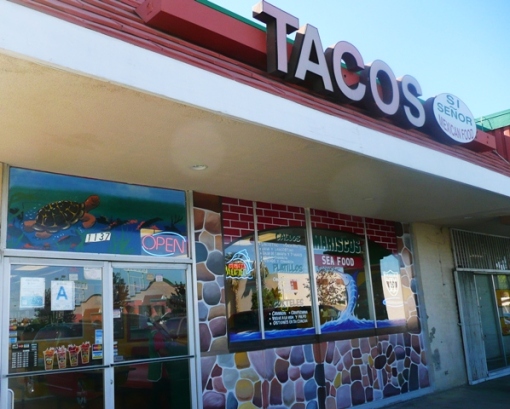There’s a method to the seeming madness that prices the same ticket several different ways. Business and first-class travelers pay a premium that allows leisure passengers to fly for less.
Perhaps you’ve been here: You snag a flight cross country — and back — for just $320, board the plane and notice a bunch of empty seats. You think: How can an airline afford this?
A few months later, you repeat the trip on shorter notice. This time, you pay $1,200 for basically the same seat. You think: This airline is making a fortune off me.
But here’s the thing: Airlines are not crazy. They know exactly what they’re doing. They just don’t always tell customers.
And to some extent they can’t. The fares are so complicated, and change so often, that no travel agent — no computer, even — can tell you just what that ticket to Toledo will cost you next Tuesday.
“The yield-management system at the airlines has gotten so sophisticated,” said Victoria Wofford, the president of the business-travel firm Tri-Pen Management. “Travelers certainly don’t understand it, and the airline doesn’t want them to.”
Lesson No. 1: Flying isn’t cheap
The U.S. airline industry historically loses more than it makes — $35 billion in five years after 2000 alone — and is the butt of many a poor-investment joke. (The best may be from Virgin Atlantic Airways founder Richard Branson, who said that to become a millionaire, one must get a billion dollars and start an airline.)
The problem lies in the convergence of two financial factors:
- Operating an airline is very expensive.
- Its source of revenue, the airline seat, is highly perishable. The moment the plane takes off, that revenue opportunity is lost forever. It is often compared to a rotting banana.
“It’s one of the toughest businesses I can think of to make money in,” said Daniel Petree, the dean of Embry-Riddle Aeronautical University’s College of Business in Daytona Beach, Fla. “The landscape is littered with failures.”
No airline in the world has succeeded with a single-fare structure, said Peter Belobaba, a pricing management expert at the Massachusetts Institute of Technology’s Global Airline Industry Program. They get beaten by the competition during off-peak travel.
“They learn pretty quickly that that’s not a revenue-maximizing, or profit-maximizing, way to go,” Belobaba said.
Take this hypothetical from American Airlines, the world’s largest airline and the only U.S. legacy carrier that hasn’t filed for bankruptcy.
It costs American Airlines about 12 cents per available seat mile (that seat’s portion of all the airline’s costs) to fly a 757. With 188 seats, a 2,500-mile transcontinental flight on an American 757 must contribute $56,400 to the company’s coffers (188 multiplied by 0.12, then multiplied by 2,500). To do that, every seat must sell for $300 ($56,400 divided by 188), said Scott Nason, American’s vice president of revenue management.
Roughly two-thirds of that $56,400 is for fixed costs, such as equipment, labor and facilities, which must be paid whether that particular plane flies or not. Next, consider that because the plane is scheduled to fly, the airline is already committed to additional spending for fuel, landing fees and maintenance.
At that point, any additional costs associated with taking an extra passenger — the marginal costs — are extremely small, maybe a tiny bit of fuel and a can of soda pop. Industry analysts have put that cost at less than $30.
Now a low-cost competitor, able to shrink costs through new planes, lower salaries and a small route system, steps in and offers tickets for $250.
“What would you do?” Nason said. “I really need to cover the seat at $300. My choice is getting $250 or nothing. I’m better off getting $250.”
“That is a philosophy . . . that drives the industry to lose money,” Nason said. “There aren’t 188 people willing to pay over $300 for each of those seats.
“As long as the cost is above your short-run marginal costs, you’re better off lowering your fare than having that seat go empty. But if you do it everywhere, then you lose money.”
Who paid what
| Los Angeles to Washington, D.C. |
|
|
Los Angeles to San Francisco |
|
|
| Fare paid |
Number of passengers |
Percentage |
Fare paid |
Passengers |
Percentage |
| $0 to $49 |
280 |
0.1% |
$0 to $49 |
10,600 |
2.1% |
| $50 to $149 |
36,570 |
12.0% |
$50 to $149 |
430,400 |
83.9% |
| $150 to $249 |
152,380 |
50.1% |
$150 to $249 |
48,260 |
9.4% |
| $250 to $349 |
50,600 |
16.6% |
$250 to $349 |
12,110 |
2.4% |
| $350 to $449 |
16,960 |
5.6% |
$350 to $449 |
3,560 |
0.7% |
| $450 to $549 |
12,190 |
4.0% |
$450 to $549 |
2,640 |
0.5% |
| $550 to $649 |
9,330 |
3.1% |
$550 to $649 |
3,320 |
0.6% |
| $650 to $749 |
8,820 |
2.9% |
$650 to $749 |
1,600 |
0.3% |
| $750 to $849 |
5,650 |
1.9% |
$750 to $849 |
260 |
0.1% |
| $850 to $949 |
2,080 |
0.7% |
$850 and up |
230 |
0.0% |
| $950 to $1,049 |
1,440 |
0.5% |
Total |
512,980 |
|
| $1,050 to $1,149 |
1,570 |
0.5% |
|
|
|
| $1,150 to $1,249 |
1,330 |
0.4% |
|
|
|
| $1,250 and up |
4,740 |
1.6% |
|
|
|
| Total |
303,940 |
|
|
|
|
Numbers are based on a 10% sample from the U.S. Department of Transportation’s Origin and Destination Survey for the first quarter of 2007, then adjusted to 100%. Flights are one way and exclude frequent-flier seats. Source: Back Aviation Solutions
The answer: Product segmentation
Because a single price scheme doesn’t work, the airlines have pioneered an elaborate system to create different products, or fares, within a single flight, for which they charge different prices. Your seat might look the same as the guy’s in 15F, but he actually bought a different product. Most likely, so did everyone on the plane.
Yield management, or, as it’s now called, revenue management, uses three general techniques:
- Entice passengers who are willing to pay to pay more for attractive amenities, such as comfort (extra legroom and bigger seats), speed (priority check-in and boarding), services (meals, beverages and additional flight attendants) and perks (lounge access and entertainment).
- Keep passengers who are willing to pay from buying discounted fares by imposing unattractive restrictions on those fares, such as prohibiting one-way combinations and layovers, adding stops, requiring advance purchase and minimum stays, and charging penalties for changes and extra amounts for peak seasons, days or times.
- Price remaining seats low enough to stimulate demand among those who otherwise might not fly, thus filling seats that would otherwise remain empty.
This is not a complete list of restrictions and perks. A single ticket’s fare conditions might run nine pages. Carl de Marcken, a co-founder of ITA Software, which writes airline shopping software for Orbitz and major airlines, computed 25.4 million possible fare combinations for one round-trip American Airlines route by allowing travel within one day on each end.
Open the possibilities — here’s where a math degree comes in handy — and it is considered effectively mathematically impossible to find the lowest available fare for a trip. There are simply too many combinations to multiply.
Why so many fares? Because each fare comes with its own supply-and-demand curve that helps the airline fetch the highest price. Powerful software tools forecast demand for each seat, then automatically recalibrate the flight, and those around it, when a ticket is purchased. This is why fares appear to change within days or even hours. Such revenue management is credited with helping the industry finally generate profits in the 1990s.
“If you can figure out how to get an extra buck on a seat you’re going to be doing well,” said Petree, of Embry-Riddle. “It’s actually down in the cents, the fractions of cents. That’s how tight the margins are.”
Cheap ticket? Thank a businessman
Any question you’ve ever had about why tickets are priced differently can be answered by asking not how much extra that fare cost the airline — maybe nothing — but by considering the demand for that seat. If someone else is willing to pay more for it, then it is priced higher. Simple as that.
Take a particularly odd example: It can cost more to fly from Boston to Chicago than from Boston to Chicago to Los Angeles. Why? Because the demand is greater for the Boston-to-Chicago flight; it’s a popular business route.
Same for the old Saturday-night-stay requirement, which served no purpose other than to push business travelers toward the higher Friday fares, said MIT’s Belobaba.
Internationally, business class generates 3.5 to 4.5 times more revenue than coach, where 5% to 20% of seats might be sold under cost, said industry analyst Henry Harteveldt of Forrester Research.
“Every travel manager out there I know for big corporations feels as if they are being taken advantage of,” said Brad Seitz, the president of Topaz International, a travel-auditing firm. It makes sense from the airline’s perspective, he said, but consultants who must travel on short notice are held captive. “They’re paying the highest fares at the last minute.”
Leisure travelers, treated as more elastic consumers, have benefited. From 1980 — shortly after deregulation in 1978 — to 2005, median airfares have declined 40%, according to a U.S. Government Accountability Office study, with fares dropping even more in long-haul markets.
Thank the folks in first class, too
On a recent United Airlines flight from New York City to San Francisco, the lowest fare was $319, round trip. The highest, an unrestricted first-class seat, sold for $3,300, one way — about 20 times more. The data were presented by Tri-Pen Management and were not unusual, say analysts.
So, what does a flier get for an extra $6,300 (assuming he or she makes the return trip as well)?
- Personal attention. A first-class cabin might have one attendant for every 10 or 15 passengers, as opposed to one for every 50 in coach.
- More room. This includes legroom, wide, reclining chairs that might go flat, and laptop work space. The actual dimensions differ by airline. Check out SeatGuru for details on all kinds of airline seats.
- Networking opportunities. “If you’re a businessperson, you meet a lot of interesting people, high-powered people,” said Bob Cowen of InternetTravelTips.com. You could land next to a champion road warrior, a frequent flier with good travel stories or even a minor celebrity.
- Quasi-fine dining. Complimentary appetizers, beverages or hot meals. And it’s OK to ask for more.
- A better movie selection. Easier access to the magazine rack.
- Shorter lines. First-class travelers need to arrive at the airport early, but they may use separate security gates with much shorter lines.
- Lounge access. First-class tickets typically come with a day pass to the airline’s club lounge. Lounges have a relaxed atmosphere, wireless computer access, food and sometimes complimentary drinks. International flight lounges might offer showers and gourmet meals.
- Better help. The lounges are staffed with senior ticket agents who appear knowledgeable and unflustered. No huddling in the crowds at the gate counter.
If you’re back in coach, cramped in a seat and clutching your last bag of peanuts, you might well nod a friendly “thank you” to the high rollers on the way out rather than scowling.
After all, their bills help fund the airline and, in part, your ability to fly on the cheap.






















